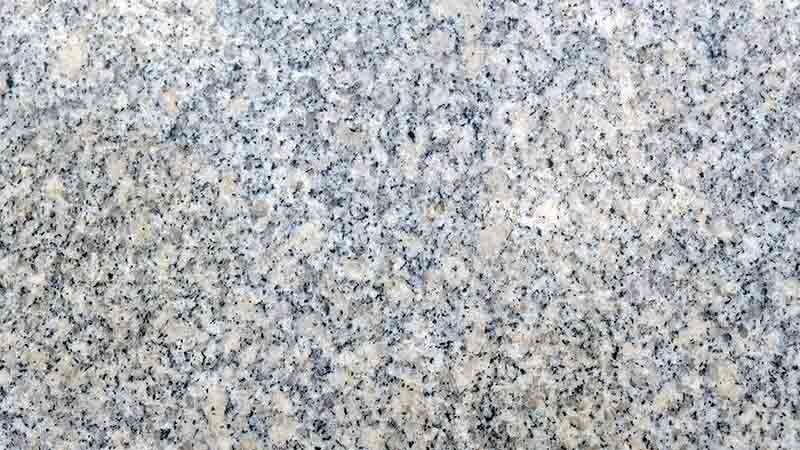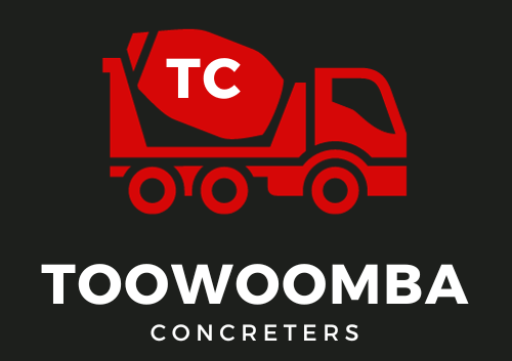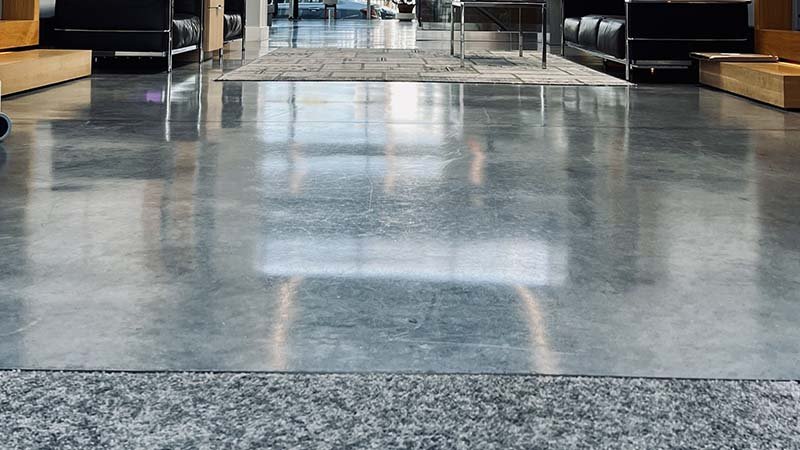Polished concrete floors are transforming homes and businesses. This guide covers everything you need to know about polished concrete, from cost to maintenance. For helpful tips on maintaining your concrete, see our guide on concrete care tips.
What is Polished Concrete?
Polished concrete is created by grinding and polishing a concrete surface to achieve a smooth, high-performance finish. The process involves progressively finer grinding and polishing stages, much like sanding wood. This creates a durable, low-maintenance, and visually appealing flooring option.
Types of Polished Concrete Finishes
Several polished concrete finishes are available, each offering a unique aesthetic:
- Aggregate Exposure: This finish reveals the decorative aggregates within the concrete mix, creating a textured, terrazzo-like appearance. The level of aggregate exposure can be customised, from a subtle hint to a prominent display.
- Salt and Pepper: A lightly ground surface that exposes fine aggregates, creating a speckled appearance.
- Cream Finish: A smooth, polished surface with minimal aggregate exposure, offering a classic, clean look. Choosing the right finish is crucial for the overall aesthetic and can significantly impact the final look of your space. Understanding the nuances of each finish will help you make an informed decision. For more detailed information on choosing the perfect finish for your project, consider consulting with a flooring expert.
Why Choose Polished Concrete?
Polished concrete offers several advantages:
- Durability: Highly resistant to wear and tear, making it ideal for high-traffic areas.
- Low Maintenance: Easy to clean with a simple mop and pH-neutral cleaner.
- Eco-Friendly: Utilises existing concrete slabs, minimising waste.
- Design Versatility: Customizable with various colours, aggregates, and patterns.
- Enhanced Lighting: Reflective surface amplifies natural light.
Cost of Polished Concrete
The cost of polished concrete varies depending on several factors:
- Size: Larger areas generally have a lower cost per square foot.
- Existing Floor Condition: Preparing a damaged slab adds to the cost. Properly assessing the condition of the existing slab is crucial for accurate cost estimation. Factors like cracks, previous coatings, and the overall flatness of the surface can influence the preparation work required.
- Desired Finish: More intricate finishes like aggregate exposure are typically more expensive. Understanding the complexities of each finish and its associated labour costs will help you budget effectively.
- Location: Labor costs vary regionally. Obtaining multiple quotes from reputable contractors in your area is essential for competitive pricing.
Expect a price range of $50-$150 per square metre. Compared to other flooring options, polished concrete offers long-term cost savings due to its durability and low maintenance. However, accurately estimating the initial investment requires careful consideration of the factors mentioned above. A detailed understanding of these factors will help you avoid unexpected costs and ensure a smooth project execution. For a more precise cost estimate, it’s recommended to consult with experienced flooring professionals who can assess your specific needs and provide tailored quotes.
Heating Options for Polished Concrete
Polished concrete can feel cold, especially in colder climates. Underfloor heating systems are a popular solution, offering comfortable warmth and energy efficiency. These systems can be installed during the initial concrete pour or retrofitted. While underfloor heating adds to the initial cost, it enhances comfort and can increase the property’s value. Choosing the right heating system requires careful consideration of factors like climate, energy efficiency, and installation costs. Researching different underfloor heating options, such as hydronic and electric systems, will help you make an informed decision. Consulting with HVAC specialists can provide valuable insights into the best system for your specific needs and budget.
For flooring contractors looking to attract more clients, a strong online presence is essential. A well-optimised website can significantly impact your visibility and reach. As you explore ways to improve your online presence, consider using our Free SEO Audit Checklist. This comprehensive checklist covers key areas like on-page SEO, backlinks, and site speed, providing a roadmap to optimise your website for search engines. Ready to take your website’s ranking to the next level? Download our Free SEO Audit Checklist and start optimising today! Leave your email below, and we’ll send you the checklist instantly. Plus, get a complimentary 15-minute consultation to review your site’s performance.
Soundproofing Solutions
Polished concrete can reflect sound, making a space feel noisy. Mitigating noise can be achieved through:
- Rugs: Area rugs absorb sound and add warmth. Strategically placing rugs in key areas can significantly reduce noise levels and improve the overall acoustics of the space.
- Underlayments: Special acoustic underlayments can be installed beneath the concrete slab. These underlayments are designed to dampen sound vibrations and minimise noise transmission. Choosing the right underlayment depends on the level of soundproofing required and the specific construction of the building.
- Concrete Mix: Certain concrete mixes incorporate sound-absorbing materials. These specialised mixes can enhance sound absorption and reduce noise reflection. Consulting with concrete suppliers can help you explore different mix options and choose the best one for your acoustic needs. Effectively addressing noise concerns requires a comprehensive approach that considers both the concrete itself and the surrounding environment. Consulting with acoustics experts can provide valuable insights into the most effective soundproofing strategies for your specific space.
Since sound can be a significant concern with polished concrete floors, it’s important to plan for sound mitigation strategies early in the design process. Understanding the various options available, such as rugs, underlayments, and specialised concrete mixes, will help you create a comfortable and acoustically balanced environment. For a more in-depth understanding of soundproofing solutions, consider consulting with acoustics professionals who can assess your specific needs and recommend the most effective strategies.

Maintenance and Repair
Polished concrete requires minimal maintenance:
- Regular Cleaning: Sweep or vacuum regularly and mop with a pH-neutral cleaner. Using the correct cleaning products is essential to maintain the shine and integrity of the polished concrete surface. Avoid harsh chemicals and abrasive cleaners, as they can damage the finish.
- Resealing: Resealing every few years helps maintain the shine and protects the surface. The frequency of resealing depends on the level of foot traffic and the specific sealant used. Consulting with flooring professionals can help you determine the optimal resealing schedule for your floor.
- Repairs: Cracks and chips can be repaired by professionals. Addressing repairs promptly can prevent further damage and maintain the overall appearance of the floor. Choosing experienced professionals for repairs ensures that the repairs are seamless and blend in with the existing finish. Proper maintenance is crucial for preserving the beauty and longevity of polished concrete floors. Understanding the recommended cleaning procedures, resealing schedules, and repair techniques will help you keep your floor in optimal condition for years to come.
Suitable Locations
Polished concrete is suitable for various locations:
- Homes: Living rooms, kitchens, hallways, basements. In residential settings, polished concrete offers a modern and stylish flooring solution that can complement various design aesthetics.
- Businesses: Retail spaces, offices, restaurants, showrooms. In commercial environments, polished concrete provides a durable and low-maintenance flooring option that can withstand heavy foot traffic.
Avoid polished concrete in areas prone to moisture, such as bathrooms, as it can become slippery. Careful consideration of the location and its potential exposure to moisture is essential when choosing polished concrete flooring.
Regional Considerations
In areas with extreme temperatures or high humidity, consider expansion joints and proper sealing to prevent cracking and moisture damage. Consulting with flooring professionals in your region can provide valuable insights into the specific considerations for your local climate.
DIY vs. Professional Installation
While small-scale DIY projects are possible, professional installation is recommended for optimal results. Professionals have the expertise and equipment to achieve a flawless, durable finish. Choosing experienced professionals ensures that the installation process is carried out correctly, resulting in a high-quality and long-lasting polished concrete floor. Understanding the complexities of the polishing process and the potential challenges involved will help you make an informed decision about whether to undertake a DIY project or hire professionals. For larger projects or complex designs, professional installation is highly recommended to achieve the desired results. Professionals have the necessary skills and equipment to handle the intricacies of the process, ensuring a smooth and flawless finish. They can also advise on the best practices for maintenance and care, helping you preserve the beauty and longevity of your polished concrete floor.
Given the complexities and potential challenges involved in polishing concrete, especially for larger projects or intricate designs, professional installation is often the preferred choice. Professionals possess the expertise, specialised equipment, and experience to achieve a flawless, durable finish that meets the highest standards. They can also provide valuable guidance on maintenance and care, ensuring the long-term beauty and performance of your polished concrete floor. For those considering a DIY approach, it’s essential to carefully assess the scope of the project, the required skills, and the potential risks involved. Smaller projects with simpler designs may be suitable for DIY enthusiasts, but larger or more complex projects are best left to experienced professionals.
With proper care, polished concrete can last for decades, making it a worthwhile investment for both residential and commercial spaces. By understanding the various aspects of polished concrete flooring, from the different finishes available to the maintenance requirements, you can make an informed decision and enjoy the beauty and durability of this versatile flooring option for years to come. For flooring professionals, having a strong online presence is more important than ever. Don’t miss out on the opportunity to boost your website’s performance and attract more clients. Download our Free SEO Audit Checklist now and start seeing results. Enter your email below, and we’ll send the checklist directly to your inbox, along with a free 15-minute consultation to discuss your site’s performance.
Townsville Concreting Company
Toowoomba Concreters
Toowoomba Concreters




